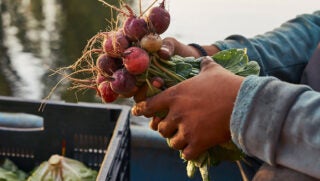The World Health Organization is recommending that farmers, ranchers, and others in the food industry stop using antibiotics to promote growth and disease prevention without diagnosis — in order to stem what it calls the rise of antibiotic resistance in the human population.
But many in agriculture immediately started throwing flags on the play, wondering how similar the foundation was to the WHO’s smear of glyphosate. Leaders in the ag industry have responded to the WHO’s news release by staying that the use of antibiotics in the animal sector has been grossly inflated, particularly in the wake of measures such as the Veterinary Feed Directive, which was launched at the beginning of 2017.
“The WHO guidelines are not in alignment with U.S. policy and are not supported by sound science,” Dr. Chavonda Jacobs-Young, the USDA’s acting chief scientist, said in a statement. “The recommendations erroneously conflate disease prevention with growth promotion in animals.”
He continued by saying, “In the U.S., the FDA allows for the use of antimicrobial drugs in treating, controlling, and preventing disease in food-producing animals under the professional oversight of licensed veterinarians. While the WHO guidelines acknowledge the role of veterinarians, they would also impose unnecessary and unrealistic constraints on their professional judgement.”
So what does the WHO recommend farmers and ranchers should do to help stave off illness in animals?
“Alternative options to using antibiotics for disease prevention in animals include improving hygiene, better use of vaccination, and changes in animal housing and husbandry practices,” the WHO’s news release states.
To get some insight into antibiotics and the effect on the human population, check out this Farm Babe article titled “Antibiotic resistance from livestock to humans, easily explained.”

